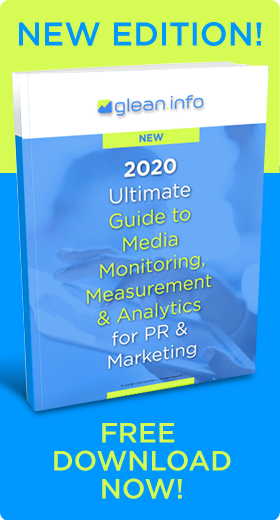
Photo credit: SeniorLiving.org
Return on investment (ROI) is a long-standing financial metric that has become fashionable among top-level marketing managers. Many marketing executives consider the metric an accurate, hard-nosed gauge of the marketing efforts, an analytical way to determine precisely how much marketing and PR contribute to the bottom line. The advocates believe the ROI metric best determines which marketing tactics are most successful.
At least a few marketing experts question that prevailing wisdom. They warn that some marketers may be blindly following numbers at the expense of truth. Analytics provide plenty of numbers. The challenge is to determine the truth within the data.
John Hall, CEO and co-founder of Influence & Co., says crazy ROI metrics may be destroying branding and storytelling. Focusing too much on how marketing impacts ROI can prompt top executives to overemphasize short-term effects at the expense of the bigger picture and long-term results, he writes for Forbes. For instance, articles he wrote on parenting, helping others and other topics in the past were flops in terms of increasing sales at the time. They were not even related to content marketing topics. Yet they were hugely beneficial in terms of brand building and eventually lead his firm to win one of its largest clients.
Finding the Entire Story
ROI analysis doesn’t tell the whole story. Sometimes you must read between the numbers, Hall points out. Data can sometimes prevent you from taking your brand to the next level, from establishing your company as a leader in its field and vastly improving the public perception of your brand. Relying solely on ROI numbers can create an environment of acceptance, stifle innovation and create difficulty in battling the competition over the long run.
PR and marketing staff can easily become so engrossed by the data that they neglect the comprehensive, long-term content marketing strategy.
ROI metrics only measure tangible results. Content marketing, on the other hand, is meant to build brand awareness and distinguish the company as an industry leader. It typically doesn’t produce much immediate results, he says, citing his own company’s experience as an example.
Content strategist Hannah Smith at Distilled agrees that ROI is often misused and misunderstood. Although it should not be disregarded, it has definite pitfalls. For one, ROI doesn’t scale up. Analytics may show email marketing is the most cost effective, but investing more in emails doesn’t mean your return will proportionally increase.
Time for a New Metric
Andy Frawley, CEO of Epsilon, also points out the shortfalls of ROI as a metric. ROI became important to marketers in the mid-20th century with the spread of large mass media campaigns. But the era of ROI has come to a close, he argues in an article for Advertising Age. He suggests that ROE2 — for return on experience times engagement is preferable.
The new metric underscores the importance of customer experience and engagement. Engagement is any action consumers take online, sharing links, commenting on review boards, downloading apps, or clicking on an ad. Enjoyable experiences drive customers to spend more on products and services regardless of their costs. Witness the customers shopping at Whole Foods or Tiffany’s.
Customer experience is especially vital in the hotel and hospitality industry where positive customer experiences regarding friendliness of the staff, ease of check-in, quality of the beds and other attributes substantially increase brand equity.
It’s still imperative to employ the proper measurement programs to produce information to guide investment decisions, Frawley stresses. Customer experience is one such metric. Customer loyalty is another – neither of which necessarily reflects in an ROI metric.
Among many other companies, Starbucks stands out for understanding the value of customer experience and loyalty – and stresses their importance in their business success, including a generous rewards program.
Used in isolation to measure PR and marketing, ROI won’t necessarily gauge the impact of brand building activities, customer experience, customer loyalty efforts or brand presence. Because the ROI metric misses many necessary elements of effective marketing and PR, ROI metrics won’t necessarily predict growth or business success – and that’s the whole point of measuring marketing and PR activities.
Bottom Line: Under pressure from top management demanding to know how well marketing and PR are performing, marketers are now reporting the return on investment (ROI) of their campaigns and overall efforts. Many marketers warn, however, that overemphasizing ROI has disadvantages and can lead to marketing pitfalls. Although it’s incumbent to be cognizant of costs and how marketing campaigns impact sales and revenue, it’s also advisable to look beyond the immediate impact and envision how marketing and PR influences public perception and long-term brand-building efforts.
William J. Comcowich founded and served as CEO of CyberAlert LLC, the predecessor of Glean.info. He is currently serving as Interim CEO and member of the Board of Directors. Glean.info provides customized media monitoring, media measurement and analytics solutions across all types of traditional and social media.





My brother in law and cousin just started their own business and have had some minor success. Right now they are trying to figure out the marketing aspect of it all but can’t seem to find a method they like. I don’t know much about this stuff at all, but it seems that this article has some good insights that I think can help them out.